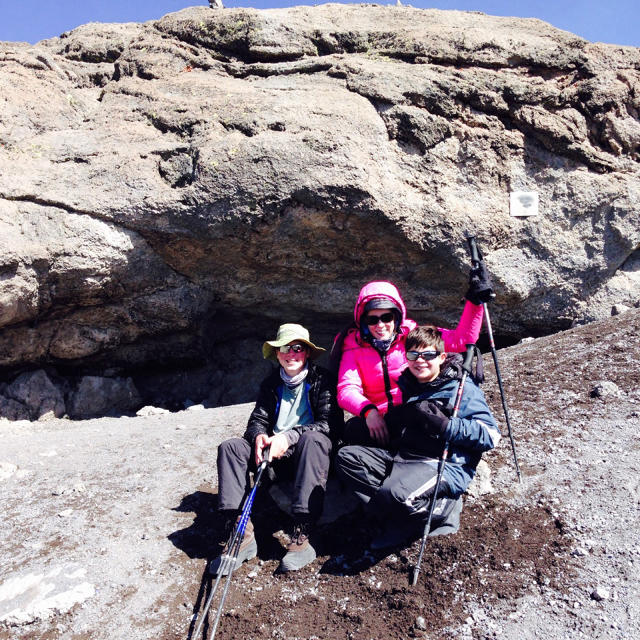How I Worked Productively On A Year-Long Family Trip Around The World
A couple of years ago, my wife and I finally did something we’d dreamed about for years; we ditched our house and cars, put the rest of our stuff in storage, took our 10- and 13-year-old boys out of school, and hit the road with only one bag each.
We’d figured it was a “now or never” type of thing. At the time, I was winding down with one startup I’d cofounded that had recently been acquired, but I’d held onto a few board of director positions, including one with a small telecom company. Over the course of our travels, that business got acquired, too, and since I chaired its board, I needed to stay in touch with colleagues during that crucial time more than I’d expected to.
That meant developing a few productivity strategies on the fly—approaches that would let me stay focused when I needed to but still disconnect to spend time with my family just as I’d planned. Most of all, my working methods would need to be flexible enough to weather all kinds of situations our travels would find us in. Here’s what proved most effective.

Make Time To Be “At Work”—And To Go Offline
One of the advantages to being in another time zone is that you can connect with colleagues and make business calls late at night, without losing out on sightseeing. For me, video was a huge helper here. I got more done via video that year than I could have by just using email and making ordinary phone calls.
Of course, we all have to sleep at some point, and traveling constantly is exhausting. So even though I did some creative scheduling to take advantage of time differences, I didn’t want to be woken up at 3 a.m. by colleagues who were just having lunch on the other side of the world. My phone’s “do not disturb” function came in handy there.
Plan To Stay Connected (It’s Easier Than You Think)
A lot of people think it’s hard to stay connected while traveling, and it can be. But I found a few easy and affordable ways to stay online virtually whenever and wherever. I invested in a T-Mobile phone plan that let me roam with unlimited data in just about any country, without having to laboriously search for SIM cards and sign up for new plans in each new place. This way, as soon as I landed in a new city, on a remote island, or in the hinterlands, I could at least check in on some work items.
Other commonplace collaboration apps were no-brainers, like Google Docs. I used cloud-based tools, including Dropbox, for personal stuff, too. From passport photos to immunization records, having online connectivity that syncs with your phone can save you a lot of time, money, and hassle. And if you sign up for iBooks or Kindle Unlimited, you can keep your reading material (including travel guides) at your fingertips without buying new ones in each new destination and lugging them around.
I actually found that you can access cell coverage or Wi-Fi from just about anywhere these days—from the beach to a high-altitude hike in the Himalayas. I even took a board call mid-hike one day on my way to base camp on Mt. Everest. I also made sure to carry an unlocked phone so you’re not locked into one carrier when staying for longer periods. I was able to secure a 3-GB plan in Nepal for the equivalent of about $10 and phone calls back to the U.S. for two cents per minute.
For everything else, there’s WhatsApp for texting and Skype audio for making calls to traditional phone lines. If you have Google Hangouts and a data plan, you can make free phone calls to regular phones in the U.S. while abroad.

Pack Your Laptop And Batteries
Your smartphone can’t do everything, I found, not even coupled with a tablet. Unfortunately, there’s still no substitute for a full-fledged laptop. We might be getting there sometime soon, but I wouldn’t have given up my laptop for anything. And be sure to bring lots of backup batteries for your devices (Anker is my brand of choice). The last thing you want is to be tethered to an outlet in a cafe or hotel room when you’re trying to see the world.
Keep A Backup Device At The Bottom Of Your Suitcase
When you’re traveling nonstop, you can expect more than life’s usual dosage of surprises. For me, it was when my phone was stolen out of my hands while in a tuk-tuk (like a cross between a rickshaw and motorcycle) in Cambodia. Before long, I’d learned the hard way that they sell different phones in different regions—and that GSM cellular frequencies are different all around the world.
A colleague very generously shipped me a new iPhone, but it got stuck in customs for weeks. So be sure to keep a backup phone with you just in case. I had an iPhone 4 that still worked; it wasn’t ideal, but it was certainly better than nothing.

Know When To Shut The Damn Thing Off
The digital infrastructure that lets us keep in touch from anywhere is a modern marvel, but it’s also important to maintain work-life balance. I had to remind myself to unplug and take time to enjoy the places we visited—otherwise what was the point?
In fact, since this was a family trip, I was extra keen to stay in touch with my family and loved ones around the world. We Skyped and FaceTimed quite a bit with family and friends. At one point I explained to my septuagenarian dad that while it cost me $3 a minute to talk to him on my cell phone, it was free when we connected by video—he was amazed.
When I stepped back and thought about it, so was I. Then I closed the app and went outside.
Scott Wharton is VP and GM of Video Collaboration at Logitech.
Fast Company , Read Full Story
(41)














